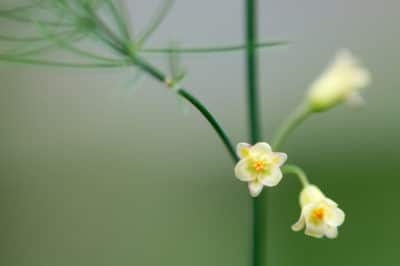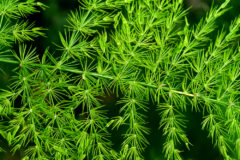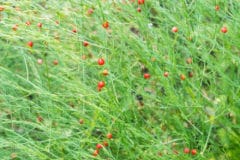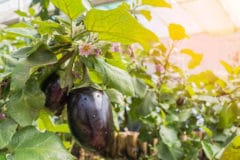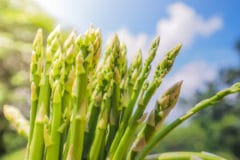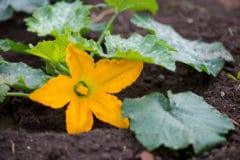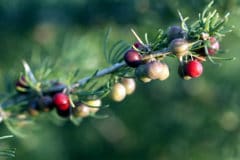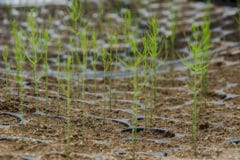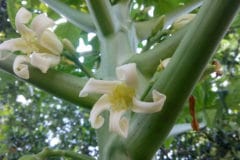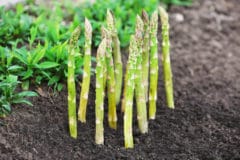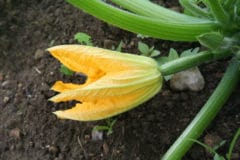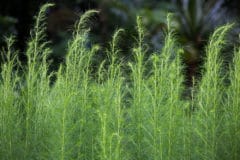Male and Female Flowers on Asparagus
Male and female reproductive parts in plants are often found together in the same flower or on separate flowers on the same plant. Asparagus is different, being dioecious, meaning it has completely separate male and female plants, each with their own reproductive flower types and growth habits.
Male and female asparagus plants produce similar flowers, both being small, greenish-white to yellow in color, bell-shaped, and occurring singly or in clusters of two or three at leaf junctions. However, if you look closely, there are differences.
Male flowers have six stamens surrounding a single, non-functional pistil, while female flowers have six infertile pistils and a single, three-sectioned stamen. Male plants also produce flowers which are more elongated than their female counterpart.
Male asparagus plants are more productive from the culinary perspective where the aim is an abundance of large, succulent, edible shoots in spring. Female plants also produce shoots, but they are smaller and not as good to eat, because the plants save their energy for making seeds later in the season. Some popular all-male hybrid cultivars include:
- Backlim
- Milliennium
- Jersey Giant
- Jersey Knight
- Lucullus
- Thielim
It is generally only the female plants which have flowers turning into bright-red berries of .25 to .4 inches (6 to 10mm) diameter at the end of summer. However, male plants can produce hermaphroditic flowers and viable seeds on occasion, as well.
Propagating Asparagus Plants
Flowers are one method plants use for reproduction, another being vegetative propagation. Asparagus plants propagate in both ways: by producing seeds from flowers and by sprouting new plants underground from their large, perennial root system.
Asparagus crowns are the root systems of asparagus plants which have been grown-out for one or two seasons in a plant nursery starting from seed. When planting from crowns, the asparagus bed starts out one year closer to producing edible shoots in the third year. When planted from seed, it takes an additional year to reach this point.
Seeds collected from asparagus plants can be started in the greenhouse in early spring. Sow seeds ½ inch ((1.3cm) deep and approximately 2 inches (5cm) apart in well-drained potting soil. Keep moist in a sunny location and allow four weeks for germination. Let plants grow a minimum of three months after germination before transplanting to the garden.
